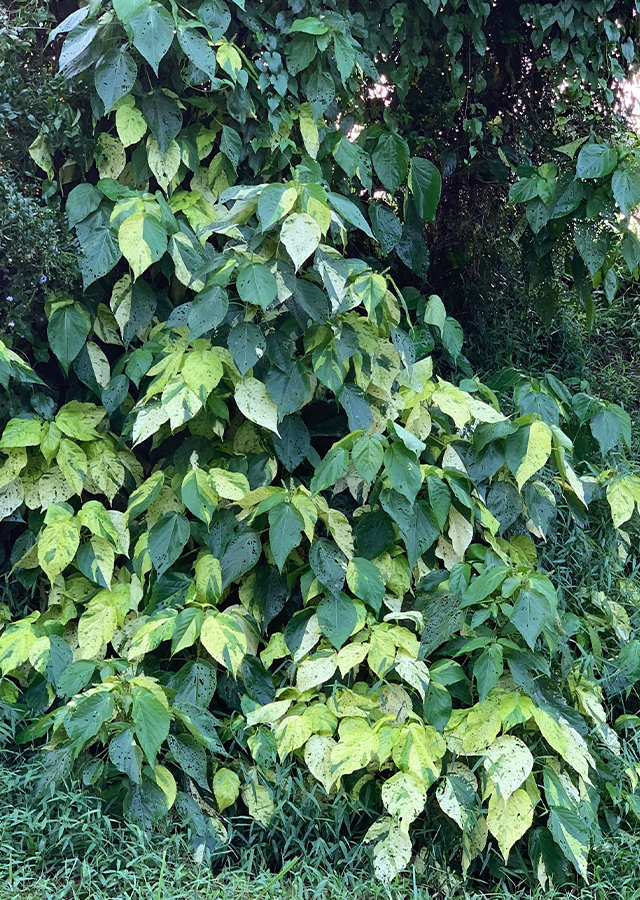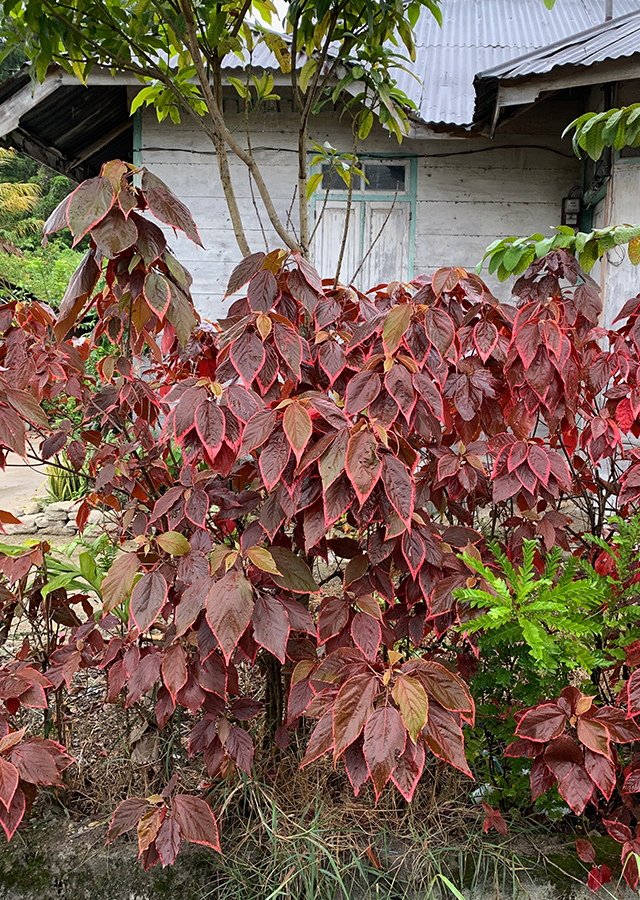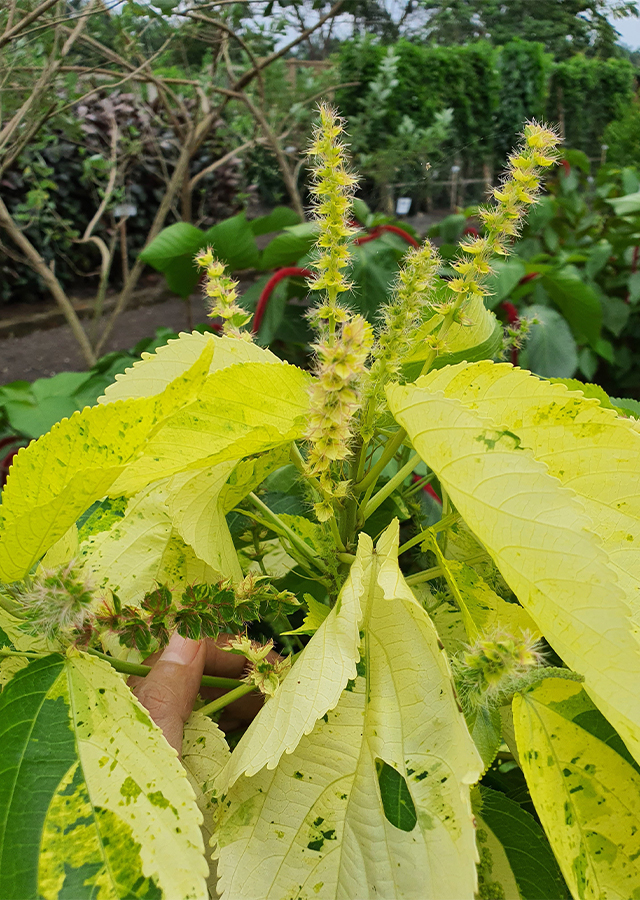Copperleaf
Acalypha wilkesiana Müll. Arg.
Euphorbiaceae
Location in our garden
Principal



Synonym
Acalypha amentacea f. circinata (Müll. Arg.) Fosberg
Acalypha compacta Guilf. ex C.T.White
Ricinocarpus wilkesianus (Müll. Arg.) Kuntze
Habitus
Shrubs. An erect or spreading, evergreen, often suckering shrub, grows 2 - 4 m tall
Part Used
Leaves
Bark
Stem
Growing Requirements
Full Sunshine
Habitat
Shrublands
Grassland
Overview
It is possibly a native of Polynesia, widely cultivated as an ornamental in South-East Asia. The plant is harvested from the wild for local use as food and medicine. It is widely cultivated as an ornamental plant, being especially valued for its wide range of variegated cultivars and also often as a hedge.
Vernacular Names
Tai turong duoi chon (Vietnamese), Ekor kucing ( Malay), Pho ngoen (Thai), Kavus (Papua New Guinea), saydan-kya (Myanmar) Jacob’s coat, firedragon.(English)
Agroecology
The plant prefer a moist, average to moderately fertile, well drained soil in full sun to partial shade. The best foliage colour is produced when growing in full sun. In area without a pronounced dry season, the plant can flower and produce fruit all year round.
Morphology
- Roots - riding, brown.
- Stems - Erect, woody, round, smooth, sympodial branching hairy twig, brown.
- Leaves - single, alternating, oval, serrated edge, tapered tip, flat base, mottled, 4-17 cm long, 2-12 cm wide, pinnate, round stalks, hairy, 1-2 cm long, purple.
- Flowers - compound, grain shaped, androgynous, in axillary, bowl-shaped petals small, purple, small stamens, sitting in a spindle along the grain axis, white stemmed pistil, crown wearing, purple, each divided into three, purple.
- Fruits - box, three bears, haired, red.
- Seeds - kidney shape, black.
Cultivation
- By seeds.
- By cutting of young shoots, routing takes place within 4 weeks at 22 °C. Plants respond very well to cuttings back and can be grown as a dense ornamental hedges.
Chemical Constituents
Saponin, flavonoids, tannins, poliphenol, alkaloids, korilagin, galat acid, monoterpen, sesquiterpenes, steroids, phlobatanin, geranin, phytate, terpenoids.
Traditional Medicinal Uses
Medicinal Uses
- The plant has been reported to possess antibacterial, antifungal, antioxidant, anti-obesity, anti-diabetic, anti-hypertensive, anti-cholesterol and anti malarial, hypnotic and anticonvulsant, antiemetic, anti-cancerous, anti-diuretic and anti HIV activity and hepatoprotective activity
Traditional Uses
- The leaves are squeezed into water and the juice is drunk as a treatment for diarrhoea and dysentery.
- The juice of fresh leaves is drunk as a treatment for laryngitis and they are chewed on as a first-aid treatment for a ruptured appendix.
- The fresh shoots are squeezed into water and solution is drunk to regulate mensturation and as an abortifacient.
- The leaves are boiled in water and used as massage for patients with fevers.
- An infusion of the leaves and barks is drunk as a treatment for pleurisy.
Part Used
Reference Sources
https://www.gbif.org/species/3057221

